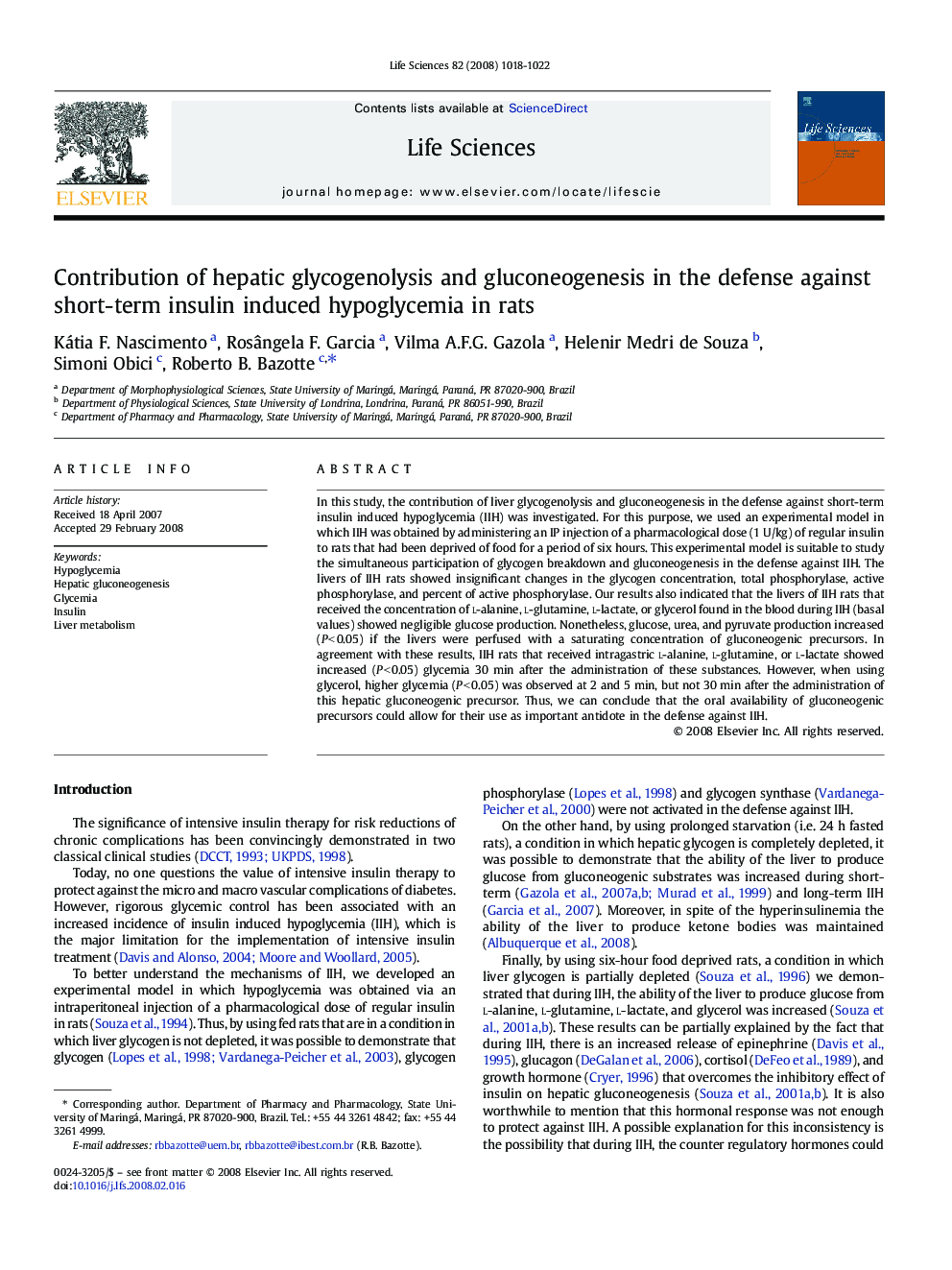| Article ID | Journal | Published Year | Pages | File Type |
|---|---|---|---|---|
| 2553229 | Life Sciences | 2008 | 5 Pages |
In this study, the contribution of liver glycogenolysis and gluconeogenesis in the defense against short-term insulin induced hypoglycemia (IIH) was investigated. For this purpose, we used an experimental model in which IIH was obtained by administering an IP injection of a pharmacological dose (1 U/kg) of regular insulin to rats that had been deprived of food for a period of six hours. This experimental model is suitable to study the simultaneous participation of glycogen breakdown and gluconeogenesis in the defense against IIH. The livers of IIH rats showed insignificant changes in the glycogen concentration, total phosphorylase, active phosphorylase, and percent of active phosphorylase. Our results also indicated that the livers of IIH rats that received the concentration of l-alanine, l-glutamine, l-lactate, or glycerol found in the blood during IIH (basal values) showed negligible glucose production. Nonetheless, glucose, urea, and pyruvate production increased (P < 0.05) if the livers were perfused with a saturating concentration of gluconeogenic precursors. In agreement with these results, IIH rats that received intragastric l-alanine, l-glutamine, or l-lactate showed increased (P < 0.05) glycemia 30 min after the administration of these substances. However, when using glycerol, higher glycemia (P < 0.05) was observed at 2 and 5 min, but not 30 min after the administration of this hepatic gluconeogenic precursor. Thus, we can conclude that the oral availability of gluconeogenic precursors could allow for their use as important antidote in the defense against IIH.
